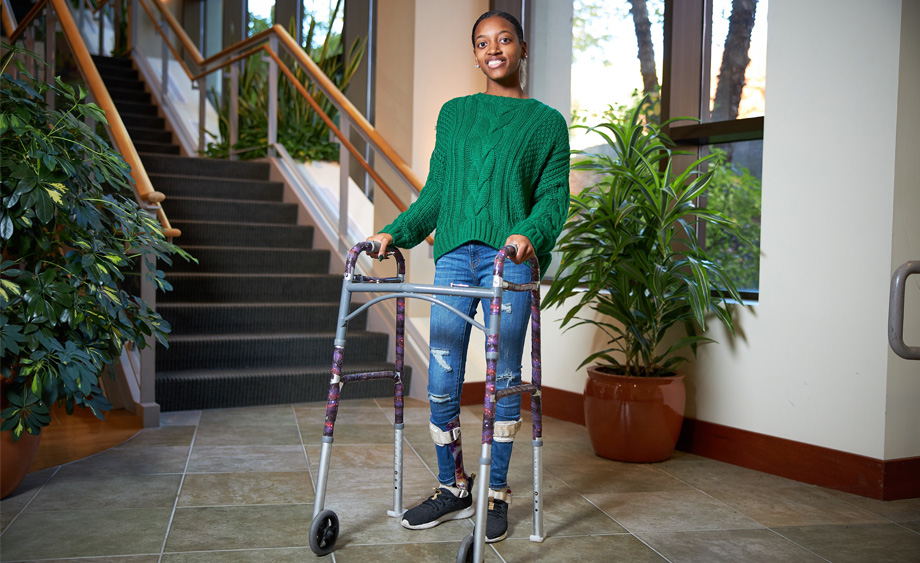
Up to 500,000 spinal cord injuries (SCI) occur each year, according to the World Health Organization.[1] Roughly one-third of these are complete spinal cord injuries that result in permanent paralysis; the rest are considered incomplete SCI’s in which the patient retains some percentage of movement below the injury site.
During hospitalization, the patient will begin inpatient therapy as soon as possible to take advantage of the brain’s ability during the first several months to reorganize itself by forming new neural connections. Referred to as neuroplasticity, the brain attempts to find new neural paths to perform the same functions as it did prior to the SCI. While the nervous system is in this state, the patient is encouraged to engage in intensive therapy to regain as much movement and function as possible.
The risk to SCI patients of not continuing outpatient therapy
After discharge from inpatient rehabilitation, some SCI patients stop attending outpatient therapy due to fatigue, depression and the perception that they have regained all of the movement they ever will. But it’s critical for the patient to continue outpatient therapy in order to regain as much motor movement as possible, improve their outlook, and maintain muscle and bone mass.
“Rehospitalization rates among individuals with SCI in the first postinjury year remain high and vary by level and completeness of injury…Those who had more intensive physical therapy had lower odds of rehospitalization.”
Rehospitalization in the First Year of Traumatic Spinal Cord Injury After Dishcarge From Medical Rehabilitation. Archives of Physical Medicine and Rehabilitation
The goal of physical therapy, occupational therapy, and speech therapy after hospitalization is to:
- Improve cardiovascular health
- Improve movement, function, speaking and swallowing
- Improve impairments to daily living skills
- Reduce spasticity
- Increase bone strength (density)
- Prevent injury from muscle weakness
- Improve balance
- Improve cognitive skills
Patients with SCI are at high risk for cardio vascular disease
Exercise plays an important role in reducing the risk for cardiovascular disease and its comorbidities such as type 2 diabetes, hypertension, and obesity.[3] In fact, the rate of cardiovascular disease in SCI patients is 30-50% compared to 5-10% in the general population.
For people with SCIs, ordinary activities of daily living (ADLs) are not sufficient to maintain cardiovascular fitness. Physical inactivity and deconditioning lead to a cycle of decline, impacting their ability to live an independent, healthy lifestyle and putting them at high risk for cardiovascular disease and premature mortality.
Loss of bone density increases the risk of fractures
One of the most serious considerations for spinal cord injury patients is that of “disuse osteoporosis”, a type of bone loss that drastically increases the risk of fractures in the leg bones.
Normally bone mass in the legs is maintained by the weight-bearing pressure that comes with activities like standing, walking, running and jumping. When an SCI limits the patient’s ability to move, bone mass decreases, weakening the integrity of the skeleton and dramatically increasing fracture risk [1]. Fractures can occur not only as the result of falling out of a wheelchair but even while seated in it, due to compressive forces. Regular outpatient physical therapy has been shown to reduce these types of injuries.
Continued outpatient therapy is critical for wellness
Outpatient rehabilitation has a lasting effect on spinal cord injury patients, as it promotes neural recovery and lessons complications associated with muscle weakness and bone density loss. According to the Academy of Neurologic Physical Therapy, “Benefits from physical activity in those with SCI include improved strength, mobility, fitness and balance. Physical activity may also reduce secondary medical conditions, such as cardiometabolic disease (CMD) and osteoporosis.” [4]
Unfortunately, nearly 50% of patients with SCI report that they get no regular exercise.Yet physical activity following a spinal cord injury is critical for functional independence, mental wellness, and social participation.[2]
Regular participation in outpatient therapy and/or adaptive fitness programs provides the best route for a person with SCI to decrease the chance of a fracture and to maintain muscle tone. Along with positioning, stretching and weight bearing exercises, the goal of outpatient therapy is to help an SCI patient maintain a high degree of functional recovery.
“The first episode of care after a spinal cord injury maximizes functional mobility and independence with ADLs”, explains Lindsey Fisher, PT, DPT at Good Shepherd Rehabilitation Network. “Upon completion, therapists educate patients on a home exercise program the patient can complete on their own or with the assistance of caregivers. The home program may include using a standing frame to maintain bone density, riding a stationary bicycle with arms or legs for muscle strength and cardiovascular health, or using wheelchair accessible weight lifting machines in our Optimal Fitness community gym.
“Good Shepherd also offers a maintenance program to patients who use a robotic exoskeleton so that even after their therapy goals have been met, they can continue walking in the exoskeleton weekly to maintain bone density, flexibility and muscle strength. We also offer a water walking program to patients who can use a swimming pool for fitness.”
Lindsey Fisher, PT, DPT
Good Shepherd offers regular follow-up appointments every 6-12 months for SCI patients to ensure that they are participating in their home exercise program and have access to the durable medical equipment they need. In addition to those follow-ups, patients often return to skilled therapy for short episodes as they encounter new obstacles to their fitness and daily living at home or in the community.
If you would like to learn more about our spinal cord injury rehabilitation program and the services offered at Good Shepherd Rehabilitation Network, please call 1-888-44-REHAB.
[3] Cardiovascular Health and Exercise Following Spinal Cord Injury, Spinal Cord Injury Research Evidence [4] Physical Activity and SCI: Overview, Academy of Neurologic Physical Therapy
